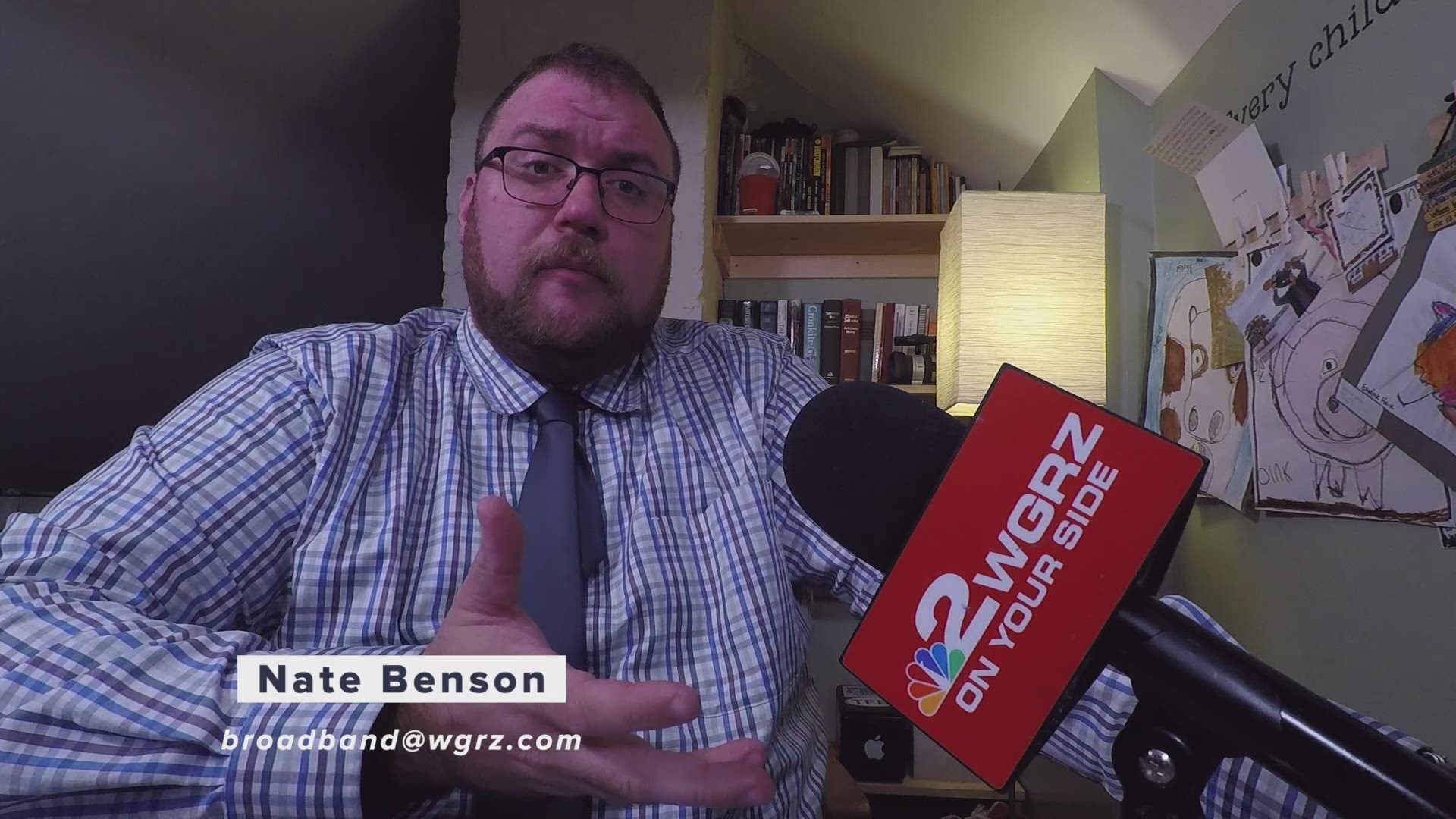LITTLE VALLEY, N.Y. — Earlier in this week 2 On Your Side reported about the rediscovery of 115 miles of fiber backbone running through several communities in the Southern Tier.
Thursday, lawmakers, broadband service providers, and advocates gathered in Little Valley to announce that a fiber backbone that has been sitting in the ground for a decade is open for business.
This backbone was first installed across the Southern Tier during the Obama administration, as a result of Recovery Act funding.
"This has been there, and I never could understand why we weren’t utilizing something that was already there," said Crystal Abers from the Cattaraugus County office of economic development. Abers mentioned this fiber backbone in a meeting with Senator Borrello a few months ago, and that spearheaded conversations across the county and state.
"Why reinvent the wheel?" Borrello said at the announcement. "This is about piloting an asset that we have that was paid for with public dollars, and that will help fast track us."
The fiber backbone is now owned by service provider FirstLight. Generally, they work with enterprise customers like hospitals, universities and are known in the industry as the middle mile provider. They provide the backbone in which another service provider would tap into in order to run service to your home.
"It makes perfect sense for us to really market, the network that’s out there today," said Patrick Coughlin, Chief Development Officer at FirstLight. "What the pandemic has done is highlight the inadequacies with fiber, it is not ubiquitous, it is not everywhere, in spite of some of the data that’s out there.
Even though Firstlight controls the backbone of fiber cable cutting through the southern tier, they do not offer the so-called fiber to the home broadband service. A last-mile provider like Verizon, Spectrum, Comcast, and others would tap into their line and provide you home internet.
2 On Your Side asked Coughlin if service providers had known about the FirstLight backbone all along and simply chose not to connect to it.
"I can’t speak for why they did not take advantage of going after to the home but it’s shifted since the pandemic, to be fair to everybody,"
Another service provider, DFT, was in attendance at Thursday's announcement. DFT currently taps into a FirstLight controlled backbone elsewhere in Western New York but they didn’t have welcoming news for those suffering from a lack of access in the Southern Tier.
"Currently the southern tier in this area, there is no plan other than the current wireless project that we’re working on with," said David Pihl from DFT.
DFT is installing Fixed Wireless service, which is different than fiber to the home and other products on market. The main reason DFT was at today’s presser was to highlight, what they say, are unfair fees placed on them by the New York State Department of Transportation.
"These days, it seems to be the cost per mile has gone up dramatically in the last couple of years," Pihl said. "To get onto the telephone poles, a typical example would be, maybe between 15 to $25,000 per mile, but a project that we completed last year, cost us almost $65,000 a mile."
This is a topic Senator Borrello and Assemblyman Joe Giglio emphasized in their remarks.
"What has happened is, many of these projects have scaled back to 60%, or 70%," Borrello said.
Assemblyman Giglio said the state needs to let entrepreneurs do what they do best and not regulate them into debt.
"If this stuff works, and it will, it’ll provide more revenue than you’re going to generate by charging," Giglio said. "So when you remove that shark and let the entrepreneurs do what they do best, create revenue"
2 On Your Side asked the NYSDOT to discuss these fees and the impact it's having on broadband expansion in Western New York. NYSDOT spokesperson Joe Morrissey sent the following:
"Fiber-optic projects supported directly through the State’s $500 million New NY Broadband Initiative are exempt from fees. For-profit fiber optic installations within NYSDOT-owned right-of-way are assessed a use and occupancy permit fee. The permit fees are based on the characteristics of a project as authorized by the statute passed by the legislature. These fees help ensure the safe and appropriate installation of fiber on the publicly-owned property as well as protect the safety of workers and the traveling public."
Senator Borrello says fiber and other internet providers are the only ones that have to pay the state a fee for access to the right of way.
"If you are providing electrical service, you don’t, if you’re running water lines, you don’t pay, but if you’re providing broadband pay a fee, so it’s unfair."
While the announcement is a first step for broadband expansion, it's not clear right now if any last-mile providers are lined up to tap into the FirstLight backbone.
"The purpose of today was to show that we have the ability to have the infrastructure," Borrello said. "Now how do we bring together the partners to ensure this happens.
Questions remain about this backbone that has been available for over a decade and not used to bring fiber-to-the-home. 2 On Your Side will continue to look into this. If you have a broadband or digital gap-related question or tip send it to broadband@wgrz.com

